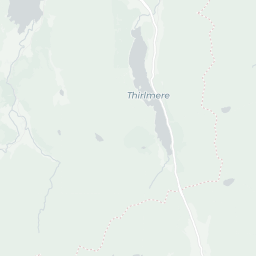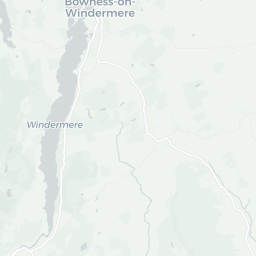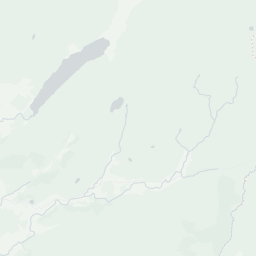Assessing geographic factors influencing appropriate design of a cycle hire network in the Lake District
Robin Lovelace
1 Introduction
The goal of this project is to provide geospatial data analysis to inform the design of a network of cycle hire points in the Lake District National Park (LDNP). This builds on a scoping document conducted outlining the need for the project (BikePlus 2017). A methodology was planned, with the following stages:
- Consider cycling networks from a bikeshare perspective
- Assess specific requirements of a bike share scheme to fit the needs of the national park
- Assess potential viability of a scheme for visitors, local residents and students in areas across the central and south Lakes
- Market readiness and potential partnerships
- Outline business model options for covering capital and revenue costs
- From ideas to implementation
The research outlined in this report and the output datasets it will generate will contribute to stage 1 and 3, which have the following sub-objectives (italics added, representing the focus of this report):
- Extent, quality and connectedness of existing cycle networks
- Overlay of attractions and potential complementary nodes in the network (cafes etc)
- How many visitors, where?
Spatial area(s)
- Analysing available statistical evidence and case studies relating to key success factors in comparison to other schemes of a similar nature. Assess whether factors co-exist in key development areas.
- Overlay key factors such as density, trip generators and cycling infrastructure to map potential locations for a bike share operations
- Identify core users & near markets
Consult operators on these issues with respect to their views on viability, scheme scope and design
2 Overall visitor numbers and distribution
Visitor data was provided by year from 1990 for a wide range of paying attractions. A selection of these are presented in Figure 2.1. It shows the dominance of the Windermere Lake Cruises and the high diversity of attractions, with the top 10 attractions generating several hundred thousand visitors per years.
Figure 2.1: Visitor numbers over time
A number of other datasets were provided, including origin-destination data of trips to the Lake District and a hypothetical network of cycle share points. To make sense of geographical distribution of these and the visitor data illustrated in the previous they were plotted as layers in a QGIS project. To enable others to explore the geographic data, a QGIS project was made available that should automatically load all the layers presented in Figure 2.2.
Figure 2.2: QGIS project with multiple layers visible - see the ldcycle.qgs file to reproduce this map.
The green route network visible in Figure 2.2 was created during a previous event almost 2 years ago based on the origin-destination data. The route network emphasises the route to the East of Lake Winderemere and has limited coverage to the West, where new cycle infrastructure has been created. It is the challenge of this report to explore how updated information would affect this proof-of-concept network.
3 Local geographic considerations
Many geographic factors should influence the design of a bikeshare network, including visitor arrival points, popular destinations and the existing cycle network.
Popular visitor arrival points were found by aggregating the origin-destination data from the travel survey by point of destination in the Lake District. The results are illustrated in Figure 3.1.
Figure 3.1: Arrivals into the study area, visitor volumes aggregated from the origin-destination data.
Likewise, common destinations were found by aggregating visitor numbers by month from visitor survey and geocoding the results. The results are shown in Figure 3.2.
Figure 3.2: Some popular destinations in the Lake District, visitor volumes are the average per year number of visits from 2010 onwards of attractions in the study area that were successfully geocoded. Major arrival points are in red.
The existing infrastructure (that which is represented in OpenStreetMap at least) is illustrated in the interactive map below. This shows a nascent off-road cycling network. A network of small roads links settlements to west of Lake Windermere; on the eastern side major roads such as the A591 (which has a cycleway along part of it towards Kendal) dominate, indicating that the focal point for a bike share network should be East of the lake.
Interactive Map 1: Cyclable infrastructure in the study area downloaded from OpenStreetMap
4 Bringing the layers together
A outline planned network developed previously based on local knowledge provides an indication of how a network of docking points could look. This was georeferences using QGIS and is presented below (also available in the ldcycle.qgis project created for this work):
Interactive map 2: Illustration of a network of cycle hire points developed based on local knowledge by BikePlus.
But how does this correspond to demand (in terms of visitor numbers and commute patterns) and supply (in terms of routes conducive to cycling)? To find out we constructed a simple spatial interaction model to estimate demand to each common tourist destination from each arrival point as follows:
flowij≈f(dij)∗arrivalsi∗destinationsj
where flow is a relative measure of travel, arrivals is the number of arrivals at point i and destinations is the number of people travelling to destination j, and β is a parameter that determines the rate of ‘distance decay’ in the model. To match UK cycling potential, we used the distance decay model developed based on commute data from Lovelace et al. (2017). This could either be seen as too steep a decay curve because holidaymakers would have more time to make trips than commuters to, or too gentle because commuters tend to be experienced cyclists riding on flat, smooth surfaces. This will not always be the case in the Lake District.
The results of running an ‘untrained model’ are illustrated in the interactive map below.
Interactive map 3: Route networks representing route networks resulting from the ‘fastest’ (red) and ‘quietest’ routes, with thickness proportional to the relative, uncalibrated measure of flow defined above.
The route networks in this interactive map shows similarities with that presented at the outset of the report in Figure 2.2. However, the addition of popular destinations and routing for quiet (not just fast) routes has had a substantial impact on the results: there is now much more travel to the less densly populated and trafficked areas to the West of Lake Windermere and the network is less centralised, with large branches of the quiet routes running along Route 6 alongside the lake, extending Nort to Grasmere and West to Coniston.
The results should be interpretted with respect to limitations of the analysis, in terms of input data (which considers only commercial visitor attractions, for example) and the limited time resources assigned to verification. With this caveat in mind, we can make the following observations about a cycle network in the Lake District:
- A cycle network based on popular points or arrival and visitor destinations is feasible from the perspective of distances, with a wide range of opportunities for short and longer trips that will appeal to a diverse range of people.
- Average trip distances calculated using a simplistic spatial interaction model were around 10 km. This would be well-suited to round-trip day rides, e.g. to Coninston and back, but may be deemed too long for some groups. The results also suggest a wide range of distance options are available (see Figure 4.1).
- Some points in the hypothetical cycle hire network represented by grey dots in the interactive map above seem to be more central (and therefore viable) than others.
- A hire point near the car park next to the Drunken Duck pub, for example, may seem remote under first impressions but is relatively central to the westerly branches of the network
- Ambleside, Skelwith Bridge and Hawkshead also appear to have high potential.
- Hypothetical hire points to the northwest of the study region, by contrast, have relatively low potential.
- The routes are hilly relative to the UK average routes, as illustrated in Figure 4.2.
Figure 4.1: Distribution of route distances (x axis) compared with an estimate of flow (y axis)
Figure 4.2: Distribution of route distances (x axis) compared with an estimate of flow (y axis)
5 Conclusion
The geographic data analysed for this project suggest that a cycle hire network in the Lake District is feasible in terms of the distances between common arrival points and popular destinations, many of which are within an hour’s cycle. A variety of routes are available to connect visitor arrival points with popular destinations, which could cater for a range of potential cycle hire customers.
The route network map generated from common origins and destinations, and weighted by visitor numbers, suggests that the hypothetical network or cycle hire points developed by BikePlus corresponds reasonably well with demand on cyclable paths, especially for quieter routes. However, some of the points on this hypothetical network, especially those in the northwest quadrant of the study area, are far from routes with high cycling potential. A tentative conclusion from the analysis is that some of these more distant points could be usefully re-located towards places that are more central in the estimated route network. Furthermore, the hilly nature of the Lake Distric lends itself to mountain bikes or electric assist cycles.
The potential for cycling to replace driving offers perhaps the most promising benefit of a cycle hire scheme in the Lake District, an element outside the scope of this study. However, it is likely that a cycle hire network would, over time, drive demand for visitor-owned cycles to be brought into the Lake District, which could lead to reduced traffic for intra-region trips.
Overall this report lends support to the idea of a cycle hire scheme in the Lake District, provided the technology is tried and tested in the prevailing Lake District conditions, and piloted properly on users. The analysis undertaken in this report provides geographic evidence to support the creation of a network that is attractive to a large and diverse a group of visitors as possible.
Note
The work presented in this report is reproducible using open source software and was facilitated thanks to the following R packages:
# package containing uk boundaries - see github.com/robinlovelace/ukboundaries
library(ukboundaries)
library(tidyverse) # package for 'data science'
library(stplanr) # transport planning package
library(raster) # geographic raster data
library(RQGIS) # R interface to QGIS
library(tmap) # for making maps in R
library(sf) # geographic vector data
tmap_mode("view")References
BikePlus. 2017. “Scoping & Viability Study for Public Bike Share in Lake District National Park.”
Lovelace, Robin, Anna Goodman, Rachel Aldred, Nikolai Berkoff, Ali Abbas, and James Woodcock. 2017. “The Propensity to Cycle Tool: An Open Source Online System for Sustainable Transport Planning.” Journal of Transport and Land Use 10 (1). doi:10.5198/jtlu.2016.862.




















